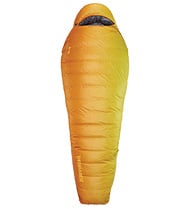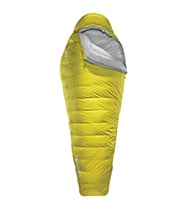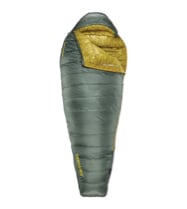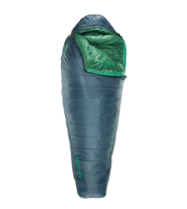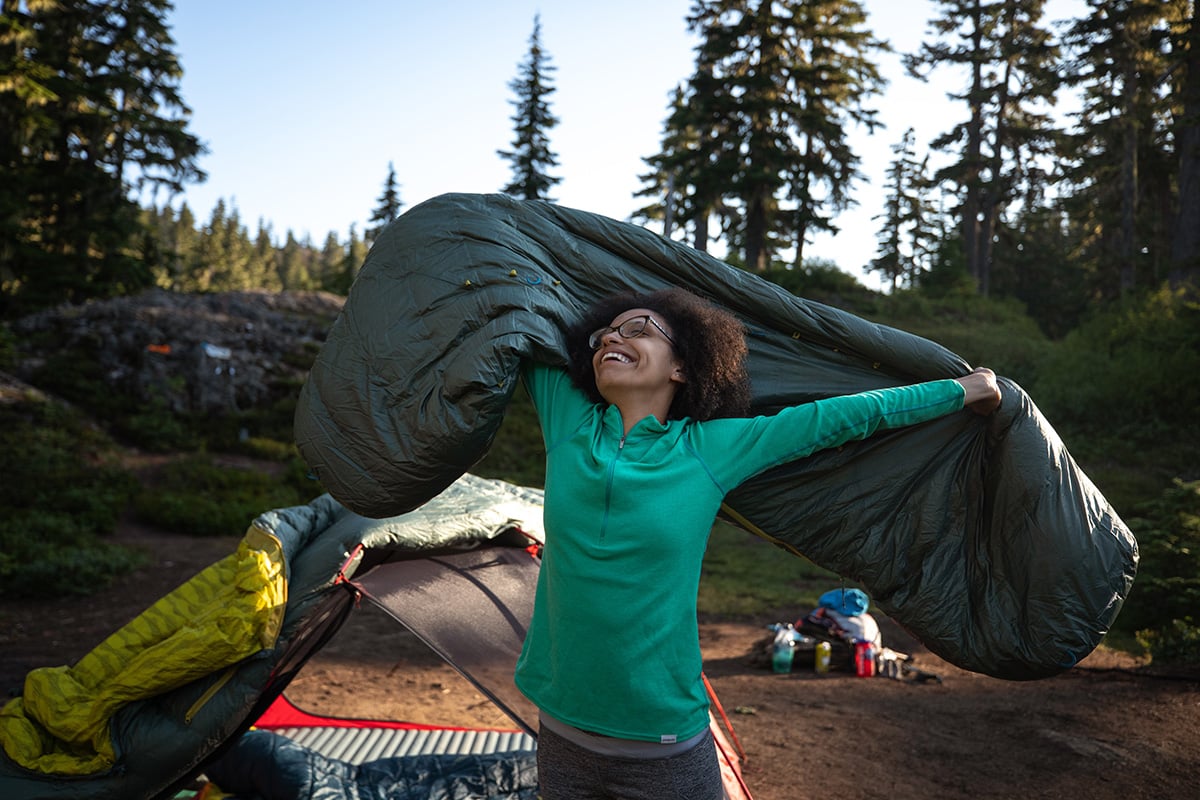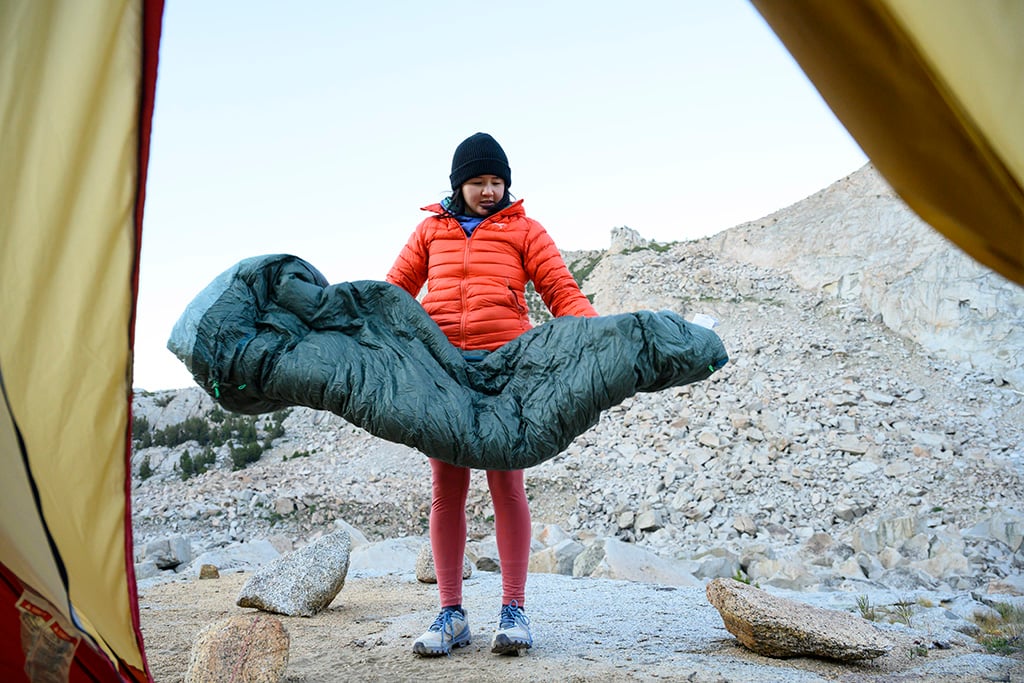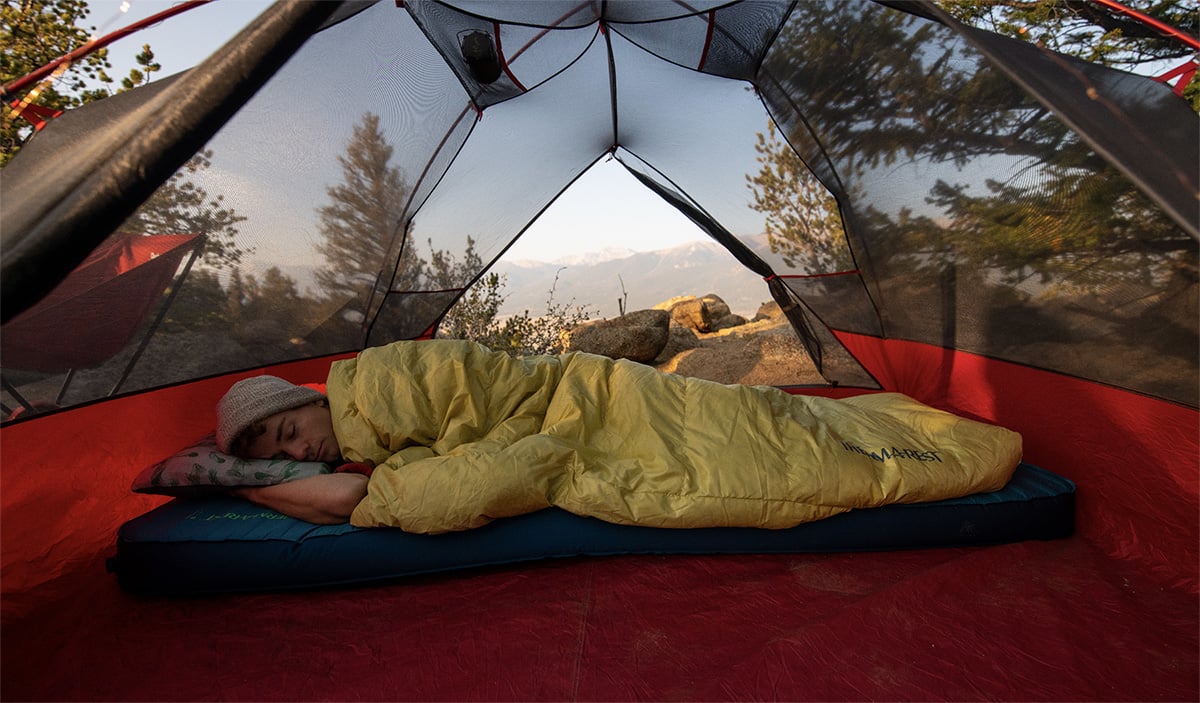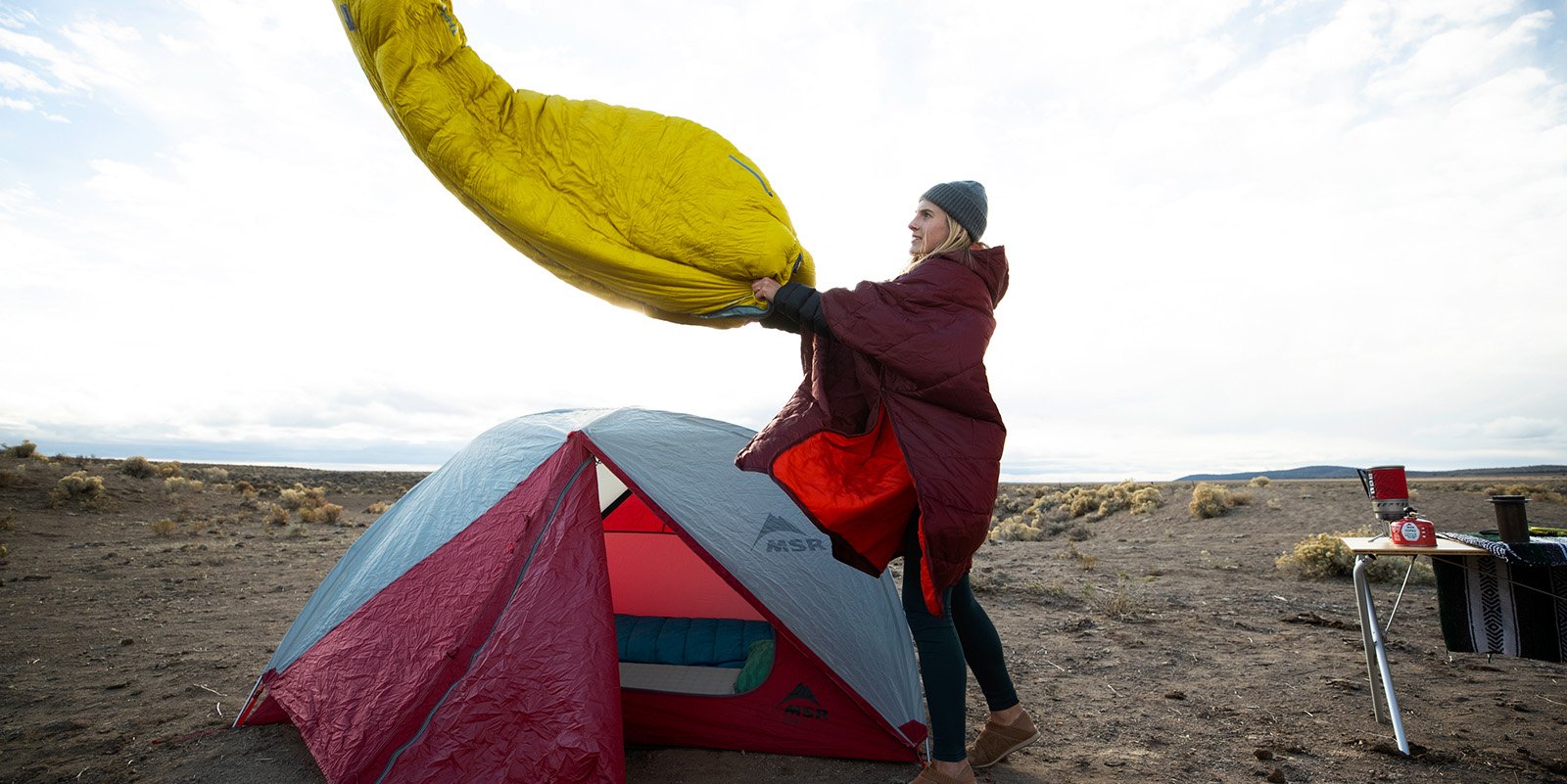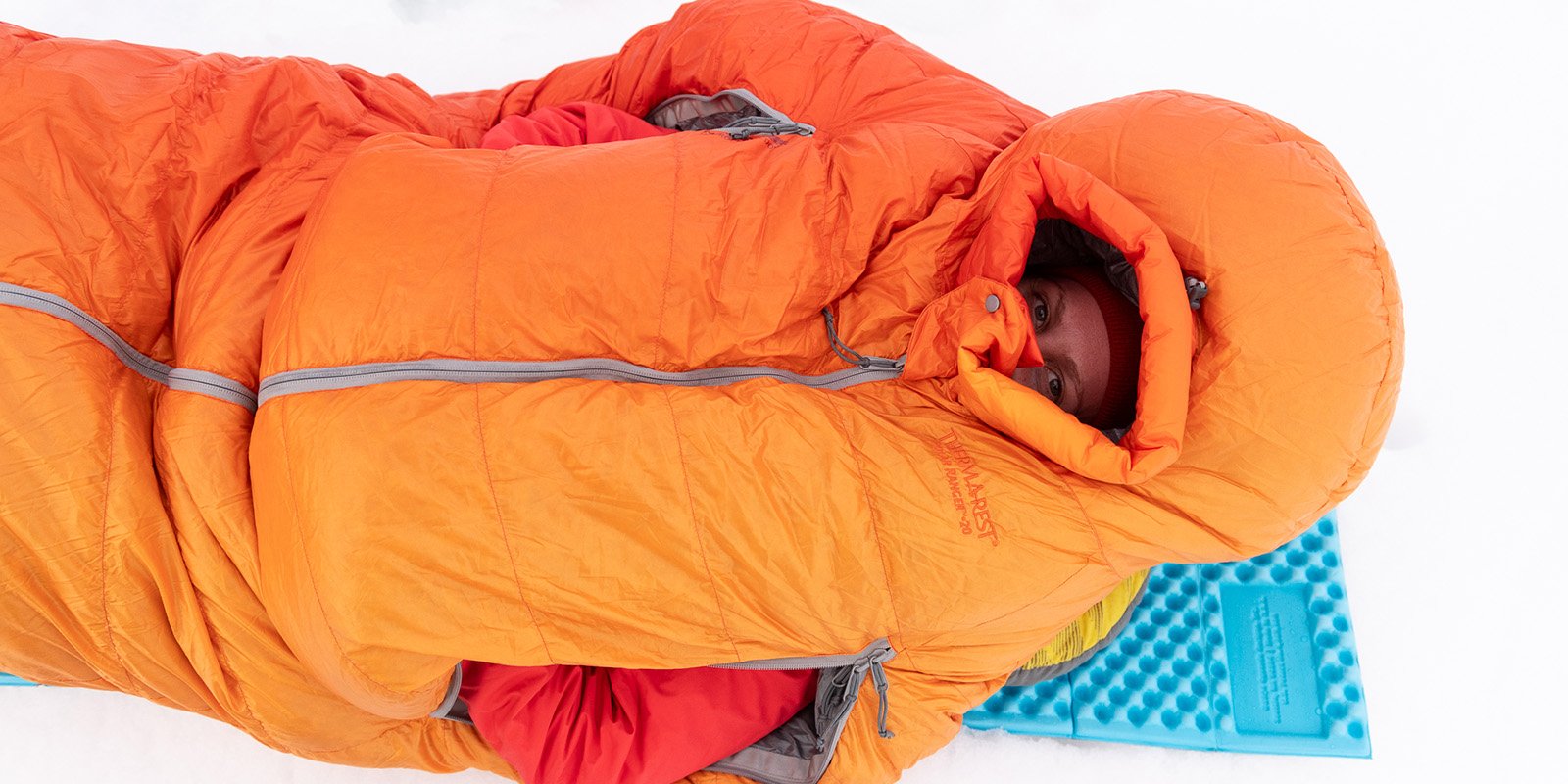The perfect sleeping bag or camping quilt won’t stay perfect without the proper care. Here are a few tips for how to take care of sleeping bags or camp quilts so you can keep your fluffy companion in tip-top shape for the next adventure.
 How Sleeping in Clothing Preserves Your Sleeping Bag
How Sleeping in Clothing Preserves Your Sleeping Bag
Wearing layers at night will maintain your bag’s integrity for extended periods of use. By going to bed with a baselayer on, you’ll not only sleep warmer by wicking moisture away from your body, but you’ll also keep your body oils from getting in your bag or quilt.
If you’ve noticed small areas on your bag where oil or dirt has visibly accumulated, we recommend hand washing just that single area initially.
How to Wash Your Sleeping Bag
Thoroughly washing your bag or quilt should not be done on a whim or haphazardly. In fact, we only recommend a full cleaning if your bag has seen extended use, or you’ve noticed that extensive amounts of oil and dirt are hindering your bag’s loft. The fact is, washing your sleeping bag will remove some of its water-resistant qualities. In our research, we’ve found that re-treating your bag or quilt at home will never give you the quality of water resistance you get from the treatment the factory applies.
However, after extended use, body oils can begin to build up on your bag and these will, over time, break down its insulation. So with a thorough wash, you can remove grime that would, if left on, reduce your bag’s warmth.
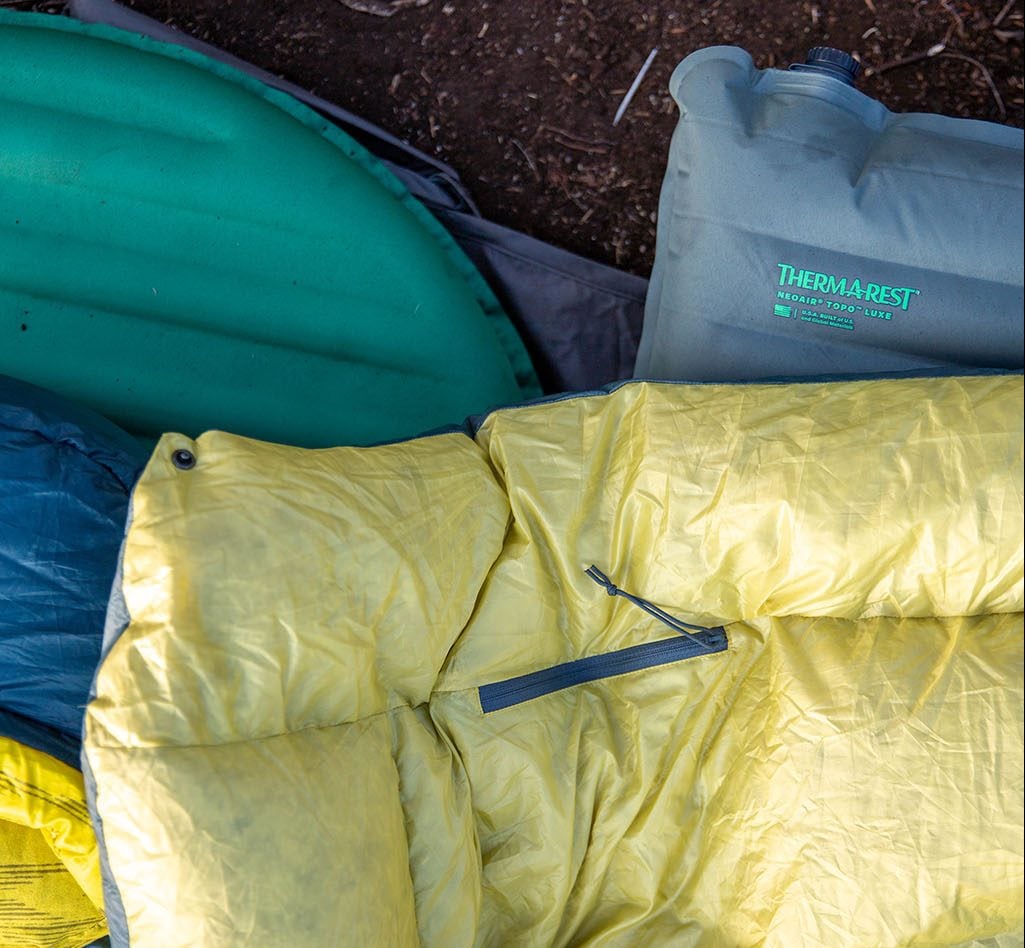
So, how should you wash your bag?
Beware: a top-loading washing machine with an agitator can destroy your bag. Seek out a front-loader (found at most laundry mats) and use a non-detergent soap. We also recommend running extra rinse and spin cycles for best results. No front-loader? No problem. Go old-school and hand wash your bag in the tub.
But what if your bag is filled with DWR (Durable Water Repellent) down?
If your sleeping bag or quilt sports treated down that’s water resistant (such as the Nikwax® Hydrophobic Down™ used in all Therm-a-Rest down sleeping bags and quilts), we recommend using a down-specific wash designed to maintain the insulation’s water-repellent qualities. Using a standard detergent will leave water-attracting residues on your down. A DWR-specific soap (such as Nikwax’s DownWash™) will maintain the insulation’s water-repellent qualities while removing harmful oil and dirt. After a few washes, it’s essential to restore the bag’s DWR coating by using Nikwax Down Proof™.

A Dry Sleeping Bag is a Warm Bag
This may seem obvious, but keeping your bag or quilt dry, as often as possible, whether you’re in the field or at home, helps preserve its insulating qualities.
If you’ve washed your bag, we recommend running it through a large industrial dryer at low heat. Keep in mind that a dryer running too hot can melt fabrics on your bag. Low heat is crucial. Also, take care that the bag doesn’t expand and get stuck next to the dryer’s heater. You can keep your bag moving inside the dryer by tossing in a few tennis balls. This will also help break up the down clusters—restoring the bag’s loft.
You can always hang-dry your bag too.
Pro Tip: After cleaning and drying your bag, turn it inside out and give it some sun … literally. Allowing your bag to soak up some rays will kill bacteria, improving your sleep ecosystem.

How to Store Sleeping Bags
A critical mistake many people make when storing their sleeping bag or camp quilt is packing it into a stuff sack. This is slowly but surely ruining your insulation by over-compressing it. Many bags come with an additional storage sack as well as a stuff sack.
the storage sack, usually mesh and much larger, is specifically designed to let your bag breathe without compressing the insulation. If you don’t have a storage sack, you can hang your bag up or lightly fold it and leave it unpacked.
Continue Reading:
- How To Wash a Sleeping Bag
- How to Store Sleeping Pads and Bags
- Down vs. Synthetic Sleeping Bags & Quilts Insulation
Updated. Originally Published March 28, 2018.
